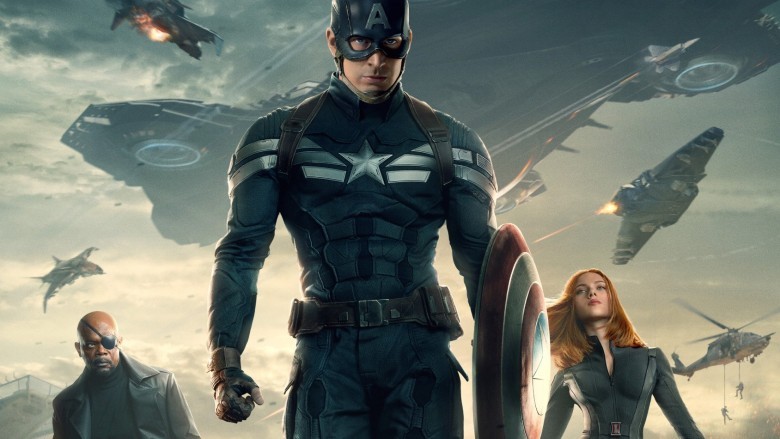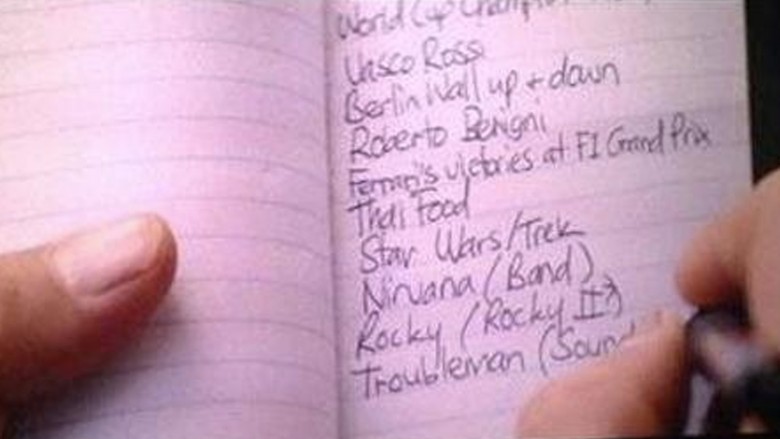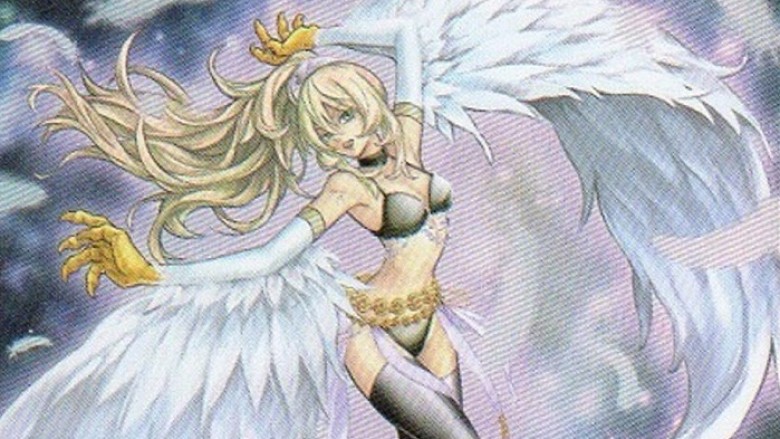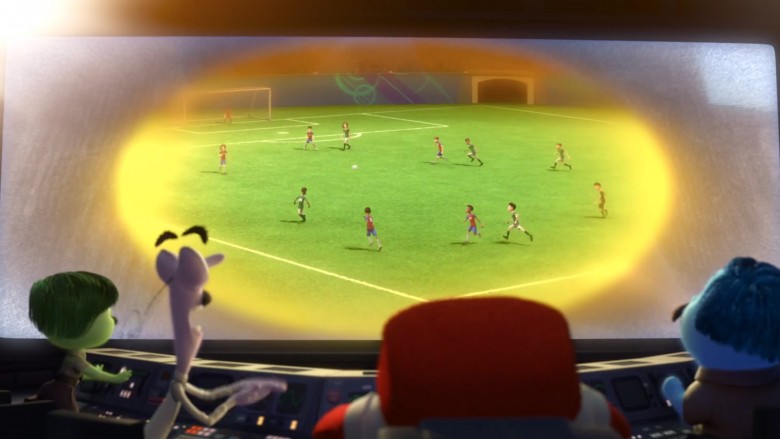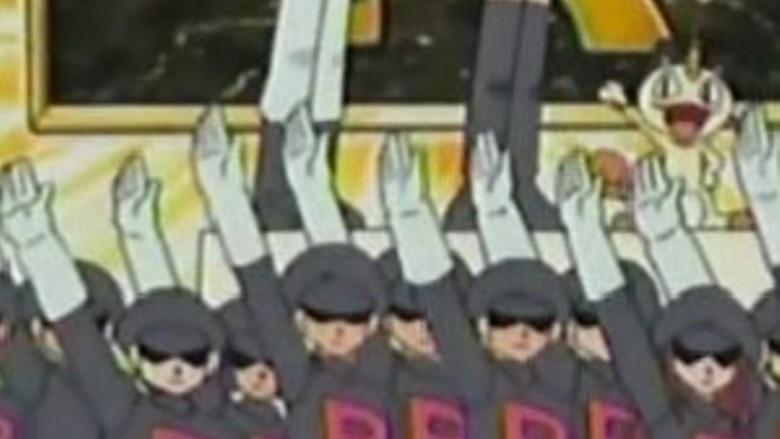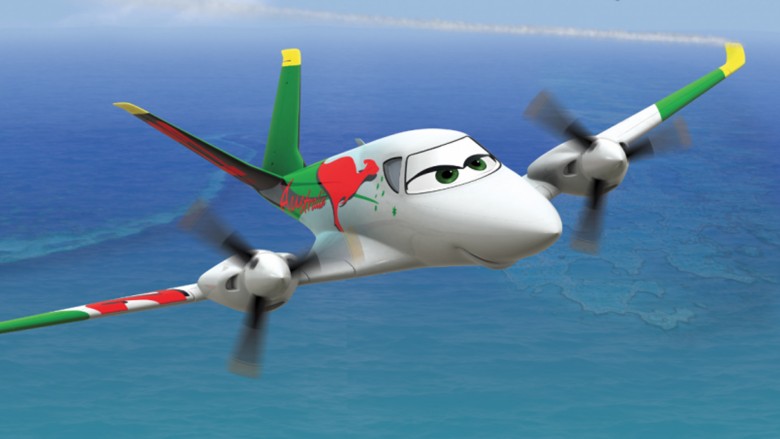Movie And TV Moments You'll Never Get To See In America
When it comes to entertainment, America is one of the most tolerant countries in the world ... right?
Well, do a little digging, and there are some things that Americans will just never get to see, and that's a shame. While it might be a bit disheartening to realize that production companies are totally going behind your back and inserting scenes just for an international market, it's even more disheartening to find out that everyone else saw some of your favorite shows in a totally different way, because it turns out you can't handle the truth.
Captain America's to-do list
America's changed a lot since the 1940s, and we can't imagine what it would be like to be dumped into the 21st century with no warning or background whatsoever. Some things would just be impossible to explain, like why we could think of nothing better to do with the possibilities of television than reality shows. The Kardashians? Try explaining them.
When Captain America makes it out of deep freeze, we see a glimpse of a notebook where he's written things that he wants to find out more about. It's stuff like I Love Lucy and disco, and honestly, we're kind of curious about what those things were, too. If you're watching Captain America in another country, though, you see a different list.
Some things—Star Wars/Trek, the Troubleman soundtrack, Nirvana, the Rocky movies, and Thai food—stay the same. Otherwise, Spanish viewers saw him add things like Chupa Chups, the 1978 Constitution, and Camilo Jose Cela on his list, while in France, he was curious about Daft Punk and The Fifth Element. In Australia, it's Steve Irwin, AC/DC, Tim Tams, and Skippy the Bush Kangaroo. (For the record, we'd pay to see a movie that's nothing more than Cap watching Skippy the Bush Kangaroo.)
The UK took things into their own hands a bit, and the Radio Times even ran a poll to let viewers vote on what television show made it on the list. The winner was Sherlock (and it appeared alongside Sean Connery, The Beatles, the Moon landing, and the 1966 World Cup Final), but it could have been Father Ted, Fawlty Towers, or The Only Way is Essex. We're glad it wasn't the last one, or he would have gone right back into deep freeze and left us to sort out our own problems.
Yu-Gi-Oh!'s massive — and weird — censorship
Remember Yu-Gi-Oh!? Sure you do. Your age absolutely determines just how you remember it, but regardless of whether you thought it was annoying or the best thing ever, you can't deny it was massive when it hit the States in 2001. Trust us when we say that it wasn't entirely the most kid-friendly thing in its original version, but once the notorious 4Kids Entertainment bought the right to import it, they made it even weirder with the massive amounts of censorship.
Let's talk about Dark Magician Girl. She has a skimpy little outfit and an uncomfortable relationship with an older dude, and in the original anime, she was a little more well endowed, shall we say. America got rid of her cleavage, and honestly, they could have gotten rid of that creepy relationship, too. Mai Valentine and the Harpies got the same desexualized treatment and were presumably taken to The Gap to buy some real clothes.
The American version took out something else: guns were completely off the table, too. (Ironic? That's a discussion for another time.) Hilariously, the censors replaced real guns with finger guns, which we kind of want more movies to do. Mentions of death were a big no-no in America, too, and in one episode, a Ouiji board—or rather, Destiny Board—spelled out the word "FINAL" instead of the Japanese version, which said "DEATH." A bunch of characters were mind-destroyed and killed in the Japanese version, while American kids will never get to see that. Instead, they saw characters banished to a hell-like world of eternal suffering, called the Shadow Realm. That's ... somehow a happier ending?
So much about Dragon Ball Z
There's not much that says "family-friendly entertainment" like monsters, alien monks, and fighting to the death, and that pretty much sums up everything you need to know about Dragon Ball Z. When it came to the States, three companies—Funimation, Ocean Productions, and Saban Entertainment—were tasked with making it viewable by American audiences. Ocean received 67 episodes to polish it up, and by the time they were done, they had 53 episodes' worth of material. The rest? We're sorry, you can't handle the rest.
Hell was changed to the Home for Infinite Losers, which can be interpreted a couple of different ways, and seriously, suggesting that anyone who dies and ends up there is nothing but a loser, well, that's just insulting. The afterlife is turned into another dimension, Mister Satan became Hercule, and characters weren't drinking alcohol anymore, they were drinking water with a really nice, foamy head. One character's tears were removed, and he just seemed to cry without them. No one knows why.
Some things were a bit more understandable, like the addition of clothes and conveniently placed foliage to conceal some bizarre child nudity. We get that. No one needs to see that. We also get why there was one particular scene cut out of Goku's showdown with Princess Snake, where her minions are sitting around playing Russian Roulette, as you do when you're minions. Just in case viewers didn't know what the stakes were, one of those minions loses in a very graphic way ... so we get why that was cut, too.
Inside Out's questionable veggies and sports fantasies
Let's face it, it doesn't matter how old you are, you can identify with Inside Out's little Riley—especially when she's faced with eating broccoli. But weirdly, you might only feel that way if you're American, because apparently, they love that stuff in other countries. They love it so much that the vegetable was changed to bell peppers in the Japanese version of it. We know, we don't believe it either. Broccoli is still the vegetable we eat when we feel like we should probably get around to doing some adulting.
That's not the only change they made, either. When Riley's father daydreams about hockey, some countries replaced that with something a little more universal: soccer. And some even opted to stick with the American version for the sake of logic. What Minnesotan would watch soccer, after all? By the time they were done, there were 28 graphics that were changed to make them more familiar to non-American audiences, including changing the direction some signs were read. That's dedication for you.
Sailor Moon's same-sex couples
What, you mean you don't remember the lesbian couple in Sailor Moon? There's a reason for that, and that's because Sailor Neptune and Sailor Uranus were turned into cousins for the American release. Makes more sense that they're a couple, we know, but when Sailor Moon came to the States, that was one of the things that censors thought just weren't going to fly in the West. (Some countries avoided the "problem" by just making Sailor Uranus a guy. Check your jokes at the door, please and thank you.)
They're not the only ones that got heavily edited for America, either. The West got a Zoisite that was a woman, because of the villain's relationship with a man. Yep—in Japan, Zoisite was a guy. The exact same thing happened to Fisheye, who was turned into a woman for the English-speaking market.
That's offensive on so many levels, we're not even sure where to start complaining about this one, so we'll move on to a couple of other things you're not going to see if you're watching this in the States. The episode where Usagi gained a bit of weight and started starving herself in a panic to lose it was heavily edited, too. As with other anime, Sailor Moon's references to death and the afterlife were cut, and instead, the Negaverse was invented. Bet you didn't think Sailor Moon could be considered that offensive, did you?
Several scenes in Iron Man 3
When Iron Man 3 came out, there was some concern about just how they were going to translate the film's villain, The Mandarin, from questionable stereotype to on-screen character that wasn't going to massively offend a good portion of the world. Not only was The Mandarin a bit removed from the source material, but Marvel decided to play extra-nice with China and shove a few extra scenes there, while everyone else just had to hear about it.
The scenes including a bonus opening scene that was pretty much a commercial for the Chinese milk drink Gu Li Duo, which apparently Iron Man is a huge fan of. There's also the addition of a scene with a Dr. Wu, played by Wang Xueqi, who watches Iron Man's challenge to The Mandarin on TV. He even calls Tony Stark and chats with J.A.R.V.I.S. For a while. Then we find out that Stark is sick of being Iron Man and goes to Dr. Wu to have the shrapnel removed from his chest. Along with the movie's widely seen operation scene, we get a couple shots of doctors walking around and talking on the phone, just showing off how Chinese they are.
Not surprisingly, people weren't entirely thrilled with the "full" version, saying that the extra scenes weren't just weird, they were completely and totally unnecessary and out of place. Sometimes, shorter is better.
Pokemon's weird changes
When Pokemon went global, there were a lot of changes that needed to be made. Some—like swapping out Japanese text for English—are common enough across most anime imports. Others don't make as much sense.
In some scenes where adults drank alcohol, glasses were changed to make it less clear. Wine glasses became ... the tops of wine glasses, and who knows, maybe super villains like orange juice. It could happen. Food was another big thing that changed for American audiences, and they were so aware of it that Brock's preference for "jelly donuts" became something of a "All your base are belong to us" sort of joke. In some places, it's just the voices that are changed, but in others, American versions have sort of stickers of American food pasted over Japanese dishes, as though no one in America could possibly understand rice balls.
American audiences also won't be seeing Team Rocket's Nazi-esque salute any time soon. There've been at least three times that the Pokemon franchise has gotten a little Nazi-ish. That means you're unlikely to see the original version of a 2003 episode that has the team in what looks like a very enthusiastic salute to Hitler. And one card—for Golbat—was edited because it had a swastika on it. It wasn't even a Nazi swastika, though, and when you're trying to catch them all, you need a little extra luck.
All the versions of Rochelle in Planes
In 2013, Disney re-skinned the successful Cars formula into Planes, and in an attempt to reach a global audience on a whole different level, one of the main characters was different depending on where in the world you were watching the movie.
In America and the UK, you'll see her as Rochelle, a pink plane because she's a girl, and get it? Pink is for girls. In Australia, she's still Rochelle, but she's got a much cooler green, red, and white color scheme with a running kangaroo on her side. It's not even entirely clear just how many different versions of her there are, but stills exist of a German version (that's renamed Heidi), a Russian (Tanya), a Japanese (Sakura), an Italian (Azzurra), a Brazilian (Carolina), and a Chinese (Yun Yan Fei) version.
Sometimes she's a different color, sometimes her name changes, it's usually a different voice actress (the American version is voiced by Julia Louis-Dreyfus), and at the end of the day, we're not entirely sure what's going on or how many versions were made for whatever reason. It was a huge attempt at making a film that would feel personal to audiences that saw it no matter where they were, and we have to give them kudos for that. A for effort, but a 25 percent on Rotten Tomatoes for execution.
